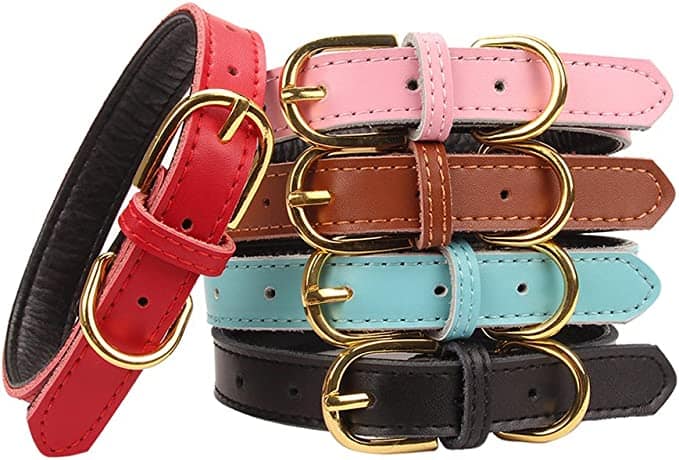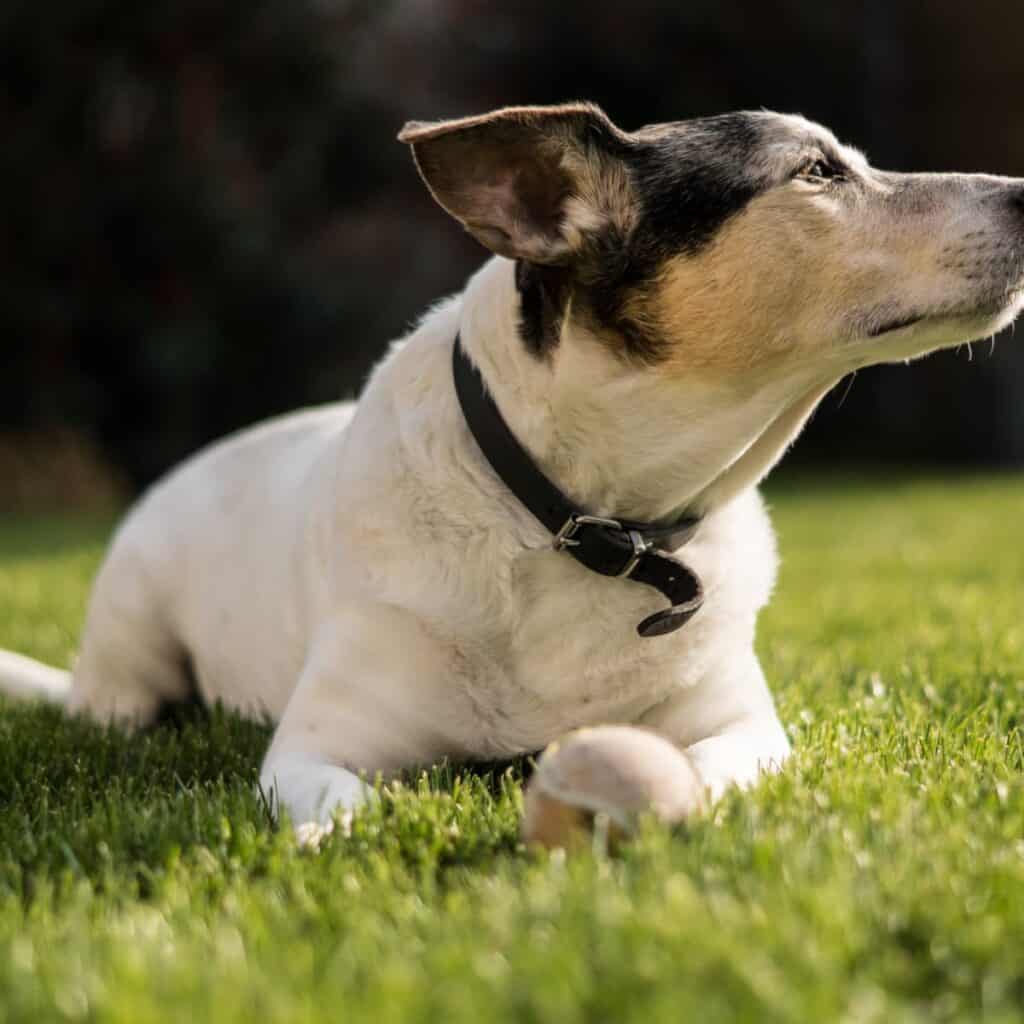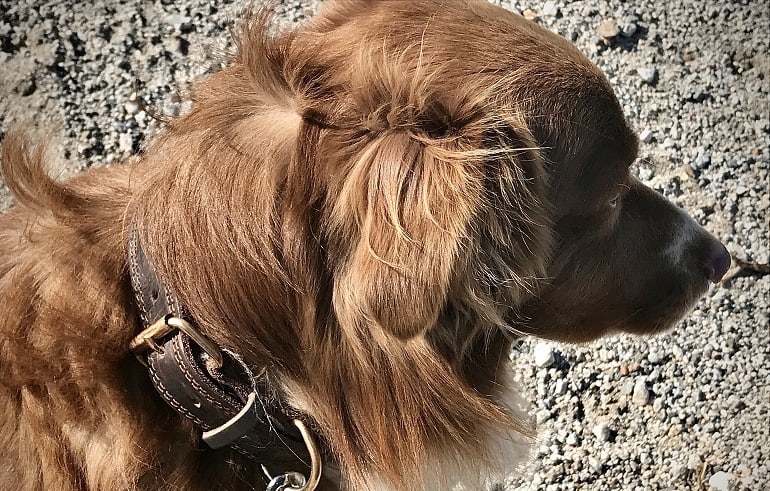You’re probably wondering “Are Leather Dog Collars Good or Bad?” As a pet owner, you always want only the best for your furry friend. Leather dog collars are often touted as a great choice for many reasons. First off, genuine leather is a natural material, which makes it less likely to cause skin irritation for your dog, especially if they have sensitive skin.
On top of that, it’s extremely durable, making it perfect for large dogs, and can withstand the test of time. Unlike nylon dog collars, which often have to be thrown in the washing machine, a leather dog collar can easily be cleaned with a damp cloth. Plus, they come in a variety of different colors and styles to suit your personal preference.
However, before making an informed decision, it’s important to consider a few things. While leather might seem like the best option because of its durability and classic look, it does require regular maintenance to keep in good condition. It needs to be treated with a leather conditioner regularly so that it doesn’t dry out and crack.
This can make it a bit more time-consuming than other types of collars, like synthetic materials or nylon webbing. Additionally, if your dog’s neck is on the smaller side, a rolled dog collar may be a better choice, as flat collar could potentially cause discomfort. Ultimately, the perfect collar for your dog will come down to your dog’s needs and your own preferences.

This image is property of worldanimalfoundation.org.
Understanding Different Types of Dog Collars
Choosing the right collar for your furry friend can sometimes be overwhelming, given the many options available in the market. Fear not, this article will shed light on some of the most popular dog collar types: Leather collars, nylon collars, martingale collars, Biothane collars, and rolled collars. If you’re looking for a classic and luxurious look, leather dog collars make a great choice.
Nylon dog collars, on the other hand, are celebrated for their durability and wide variety of colors. Martingale collars are especially suitable for dogs with heads smaller than their necks, preventing them from backing out of the collar.
Biothane collars are known for their water and odor-resistant, making them a great option for dogs who love water activities. Rolled dog collars help to prevent matting and tangling in dogs with long fur. The last type we’ll explore is dog training collars, which are used for teaching leash manners.
Features of Leather Dog Collars
Natural Material
Leather collars are made from a natural material providing a touch of luxuriousness and classic look, quite unlike the synthetic materials.
Durability
Due to their leather construction, these collars are highly durable. If well-maintained, a good quality leather collar can stand the test of time.
Variety of Colors and Styles
Leather collars are available in a variety of colors and styles, allowing you to select one that suits your dog’s personality perfectly.
Classic Luxurious Look
There’s something timeless about the luxurious look of a leather dog’s collar. No wonder it’s a popular choice among many dog owners.
Different Leather Types
When it comes to leather types for dog collars, you have a range of options including genuine leather, full grain leather, and faux leather.
The Advantages of Leather Dog Collars
Great Choice for Large Dogs
Leather collars are a great choice for large dogs due to their strength and durability. They can withstand the pulling and tugging that larger dogs often subject them to.
Long Lasting: The Test of Time
Leather collars, if cared for properly, can last a long time. They’re resilient and can withstand the test of time.
Possible Personalization
One of the fun aspects of leather collars is that they can be personalized with your dog’s name, your phone number, or other important information.
Gentle on the Dog’s Skin
As a natural material, leather is often softer and more comfortable on your dog’s skin compared to synthetic materials.
Requires Less Maintenance and Washing
Leather materials tend to be easier to clean than most synthetic fabrics.
The Disadvantages of Leather Dog Collars
Potential for Skin Irritation
While leather is generally gentle on the skin, some dogs with sensitive skin might experience irritation.
Typically More Expensive
Genuine leather, being a natural and durable material, is costlier than synthetic material collars.
Not Ideal for Water Activities
Leather and water don’t mix well. For dogs who love to swim, a synthetic or a Biothane collar would be a better choice.
Regular Maintenance
To keep your leather collar in good condition, it’s important to apply a natural oil or a leather conditioner regularly.

This image is property of worldanimalfoundation.org.
Comparison With Other Dog Collar Materials
Leather Vs Nylon Collars
Leather and nylon are among the most common materials used for dog collars. Nylon is less expensive, more flexible, and lighter than leather. However, leather collars are more durable and have a classic look that nylon can’t match.
Leather Vs Synthetic Materials
While synthetic collars are cheaper, they may cause more skin irritations. Conversely, leather is a more natural material that’s softer on your dog’s skin.
Leather Vs Biothane Collars
Biothane collars, known for their water and odor resistance, could serve as a great alternative for dogs who are fond of water activities, unlike leather collars which can deteriorate with excessive exposure to water.
Choosing the Right Leather Collar for Your Dog
Correct Size and Fit
Getting the right collar size for your dog’s neck is critical, too tight could cause discomfort while too loose could put your dog at risk of slipping out of the collar.
Choosing a Color
Although predominantly available in brown, leather collars can come in other shades too. Choose a color that suits your dog’s coat or your personal preference.
Flat Collar Vs Rolled Collar
Flat collars are best suited for short-haired dogs while rolled dog collars can help prevent tangling and matting in dogs with long fur.

This image is property of images.saymedia-content.com.
Maintenance of a Leather Dog Collar
Cleaning
Clean the collar regularly by wiping it with a damp cloth to remove dirt and grime.
Conditioning
Condition the leather regularly to keep it soft, pliable and to prevent it from cracking.
Avoid Harsh Chemicals
It’s important to avoid using harsh chemicals which might degrade the leather. A gentle soap should work fine.
Proper Storage
Store the collar in a cool and dry place to maintain its quality and longevity.
Are Leather Collars Appropriate for All Dogs?
Leather collars can be appropriate for dogs of all sizes, however, each has unique aspects to consider. Small dogs might be more comfortable with a lighter material. For dogs with long fur or sensitive skin, a rolled leather collar can prevent tangling and minimise skin irritation. Active dogs who enjoy swim might best be suited to Biothane or some other water-resistant material.

This image is property of images.saymedia-content.com.
Leather Collars in Dog Training
Leather training collars can be a useful training tool. Safety is important so always ensure the collar is well fitted. Leather training collars are quite effective owing to their durability but it’s important to compare them with other material collar options.
Making an Informed Decision for Your Furry Friend
When choosing a collar for your pooch, considering your dog’s needs and lifestyle is paramount. Always prioritise the safety of your dog and ensure the collar is always the right fit. Although leather collars may cost more upfront, they can offer value for money in the long run owing to their durability. Finally, personal preference plays a big role too – if you prefer the classic and luxurious look of a leather collar, it might just be the right choice for you and your furry friend!






